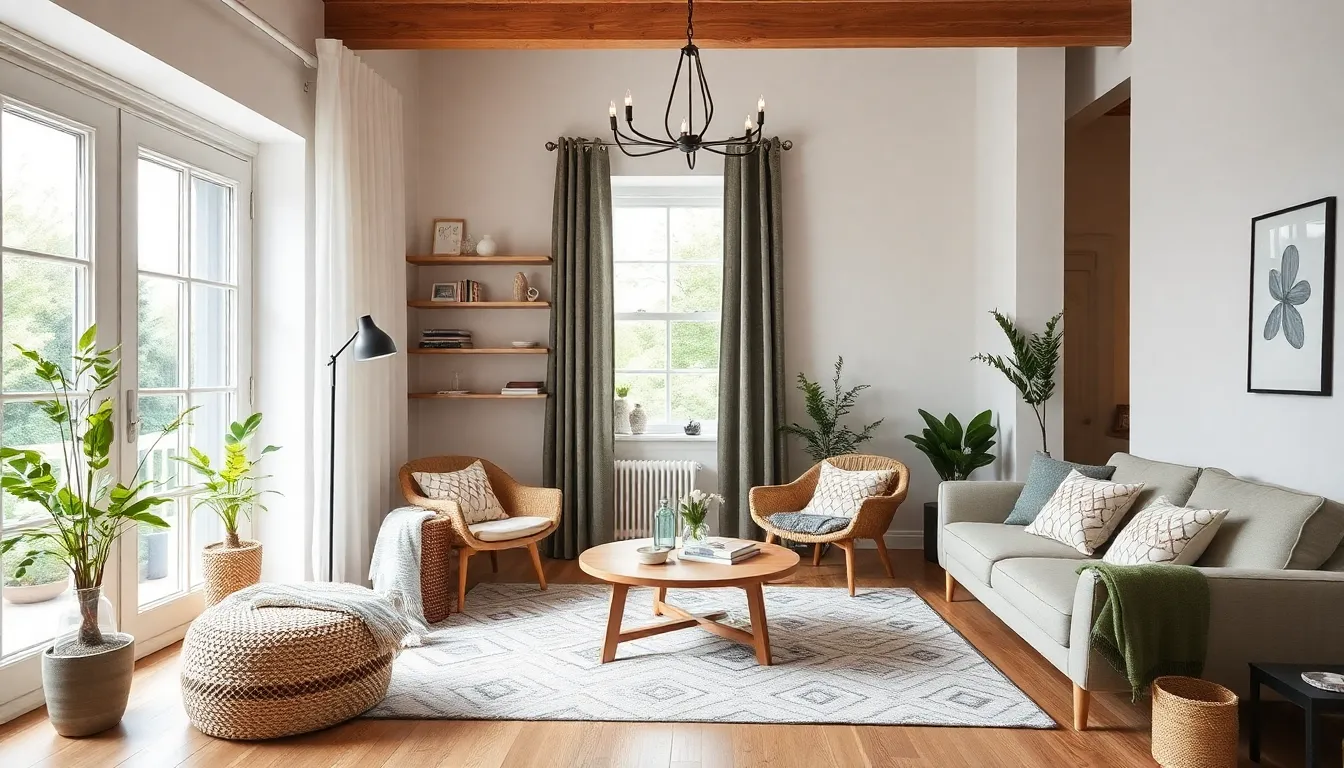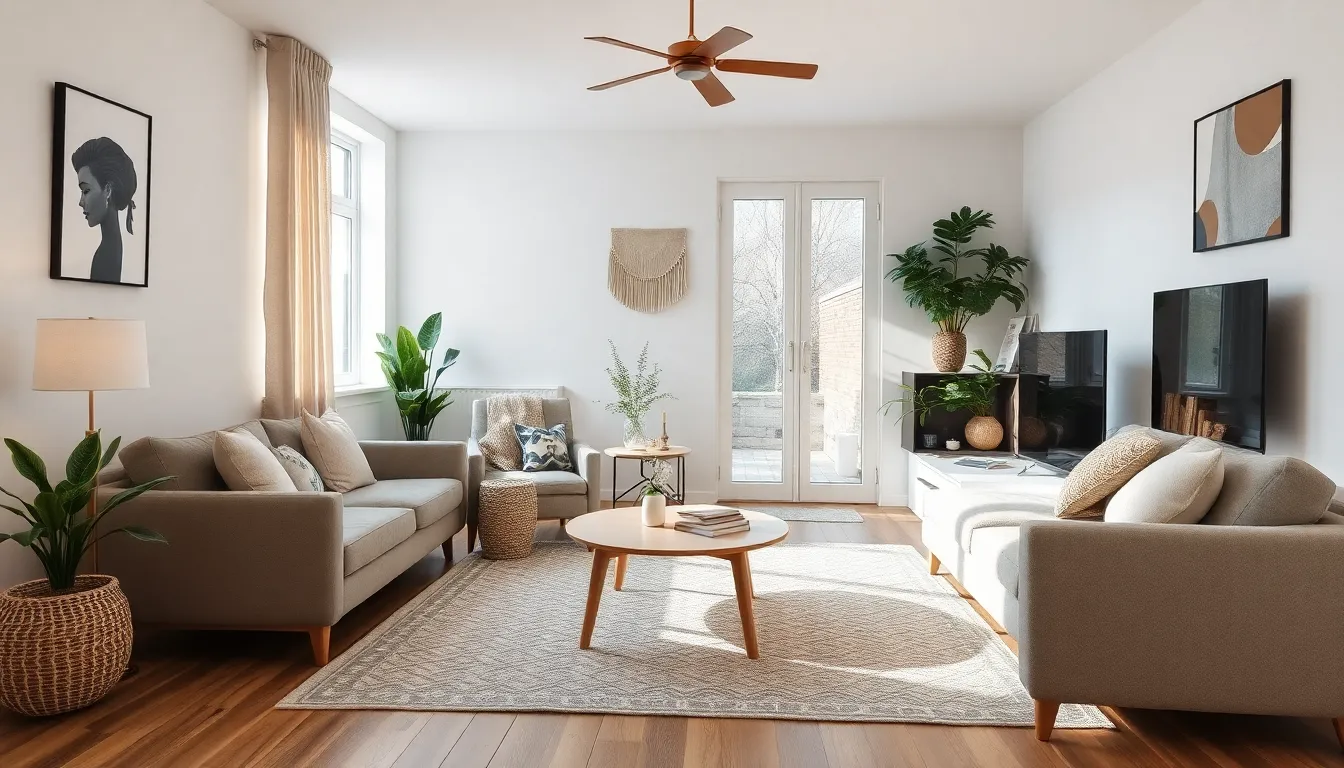Scandinavian Interior Design: Create a Cozy and Minimalist Home with Decoratly 🏡❄️
Discover the beauty and simplicity of Scandinavian interior design. Learn about key elements, color palettes, and how to achieve a cozy, minimalist space in your home with Decoratly. Explore the latest trends and expert tips for creating a stunning Scandinavian-inspired interior.
The Essence of Scandinavian Interior Design 🌟
Scandinavian interior design is a timeless style that celebrates simplicity, functionality, and connection to nature. Originating from the Nordic countries, this design approach embraces clean lines, minimalism, and a light, airy feel. It's characterized by a perfect balance between beauty and practicality, creating spaces that are both visually appealing and comfortable to live in.
At the heart of Scandinavian design is the concept of "hygge" (pronounced hoo-ga), a Danish word that embodies coziness, contentment, and well-being. This philosophy influences every aspect of Scandinavian interiors, from the choice of materials to the arrangement of furniture, resulting in spaces that are warm, inviting, and perfect for long, cold Nordic winters.

Key Elements of Scandinavian Interior Design 🗝️
- Light and neutral color palette: Whites, grays, and soft pastels 🎨
- Natural materials: Light woods, leather, wool, and stone 🌿
- Abundance of natural light: Large windows with minimal coverings ☀️
- Functional furniture: Clean lines and multi-purpose pieces 🪑
- Cozy textiles: Soft throws, sheepskins, and cushions 🧶
- Minimalist decor: Carefully curated accessories and art 🖼️
- Indoor plants: Bringing nature inside 🌱
- Warm lighting: Candles and soft, ambient light sources 🕯️
- Open floor plans: Creating a sense of space and flow 🏠
- Texture: Mixing materials to add depth and interest 🧵
The Evolution of Scandinavian Design: A Brief History 📜
Scandinavian design has a rich history that spans over a century. Let's explore its journey:
- Early 20th century: Roots in the Nordic Romantic movement, emphasizing traditional craftsmanship.
- 1930s: Emergence of functionalism, focusing on simplicity and practicality.
- 1950s-1960s: Golden age of Scandinavian design, with iconic furniture pieces gaining international recognition.
- 1970s-1980s: Incorporation of more color and pattern, influenced by global design trends.
- 1990s-2000s: Return to minimalism and focus on sustainability.
- 2010s-present: Blending of traditional Scandinavian elements with global influences, emphasis on hygge and well-being.
This evolution showcases how Scandinavian design adapts to changing lifestyles while maintaining its core principles of simplicity, functionality, and connection to nature.
Creating a Scandinavian Interior: Step-by-Step Guide 🏡
Transform your space into a Scandinavian haven with these steps:
- Start with a light base: Paint walls white or in soft, neutral tones.
- Maximize natural light: Use sheer curtains or leave windows bare.
- Choose light wood flooring: Opt for pine, beech, or ash for an authentic look.
- Select functional furniture: Choose pieces with clean lines and light wood or neutral upholstery.
- Add cozy textiles: Layer with soft throws, sheepskins, and cushions in natural materials.
- Incorporate natural elements: Use plants, wooden accents, and natural stone.
- Create ambient lighting: Use a mix of floor lamps, table lamps, and candles.
- Declutter and organize: Keep spaces tidy with smart storage solutions.
- Add minimal decor: Choose a few statement pieces and keep accessories to a minimum.
- Bring in subtle color: Use muted pastels or nature-inspired hues for small accents.

Scandinavian Color Palettes: Creating Light and Warmth 🎨
The color palette is crucial in Scandinavian interior design. It typically consists of:
- Base colors: Whites, off-whites, and light grays form the foundation.
- Neutral accents: Beiges, tans, and soft blacks add depth.
- Subtle pops of color: Muted blues, greens, and blush pinks for interest.
The key is to create a bright, airy atmosphere. The neutral base provides a calm backdrop, while carefully chosen accent colors add warmth and personality. Remember, in Scandinavian design, colors should feel natural and not overly bold or saturated.
Furniture and Materials in Scandinavian Design 🪑
Furniture plays a crucial role in defining Scandinavian interiors. Here are some key characteristics and popular materials:
Furniture Characteristics:
- Simple, clean lines
- Functionality and practicality
- Light wood finishes
- Raised legs to create a sense of space
- Minimal ornamentation
Popular Materials:
- Wood: Especially light varieties like pine, beech, and ash
- Leather: Natural, untreated leathers
- Wool: For textiles and upholstery
- Metal: Brushed steel and copper accents
- Glass: For lighting fixtures and decorative elements
When selecting furniture, focus on pieces that combine form and function. Look for items that are both beautiful and practical, embodying the Scandinavian principle of everyday luxury.
Lighting in Scandinavian Interior Design 💡
Lighting is crucial in Scandinavian design, especially given the long, dark winters in Nordic countries. Here's how to approach lighting in a Scandinavian-inspired space:
- Natural light: Maximize daylight with large windows and minimal window coverings.
- Layered lighting: Use a combination of ambient, task, and accent lighting.
- Pendant lights: Incorporate sleek, minimalist pendant lights as statement pieces.
- Floor and table lamps: Use lamps with clean lines and natural materials.
- Candles: Create a cozy atmosphere with plenty of candles.
- Warm light bulbs: Choose bulbs with a warm color temperature to create a welcoming glow.
Remember, in Scandinavian design, lighting is not just functional but also contributes to the overall ambiance and feeling of hygge in the space.
Incorporating Hygge in Scandinavian Interiors 🕯️
Hygge is a central concept in Scandinavian design, focusing on creating a warm, cozy atmosphere. Here are some ways to incorporate hygge into your space:
- Soft textiles: Layer rugs, throws, and cushions for comfort.
- Warm lighting: Use candles and soft, ambient lighting.
- Natural materials: Incorporate wood, wool, and other natural textures.
- Cozy nooks: Create inviting reading corners or window seats.
- Fireplace or wood stove: If possible, include a focal point for warmth.
- Personal touches: Display meaningful objects and family photos.
The key to hygge is creating spaces that promote relaxation, comfort, and togetherness. It's about enjoying the simple pleasures of life and creating a sanctuary from the outside world.
Sustainable Practices in Scandinavian Interior Design ♻️
Sustainability is a core value in Scandinavian culture and design. Here are some eco-friendly approaches to consider:
- Choose quality over quantity: Invest in well-made pieces that last.
- Use natural, renewable materials: Opt for sustainably sourced wood and organic textiles.
- Embrace minimalism: Reduce consumption by owning fewer, but better items.
- Upcycle and repurpose: Give new life to old furniture and decor.
- Energy-efficient lighting: Use LED bulbs and maximize natural light.
- Indoor plants: Improve air quality and connect with nature.
By incorporating these sustainable practices, you can create a Scandinavian-inspired space that's not only beautiful and cozy but also environmentally responsible.
Create Your Dream Scandinavian Space with Decoratly! 🏡❄️
Ready to embrace the cozy minimalism of Scandinavian interior design? Sign up for Decoratly today and start transforming your living space into a serene Nordic haven! Our platform offers a carefully curated selection of Scandinavian-inspired furniture, decor, and accessories, making it easy to achieve that perfect balance of simplicity and warmth. Plus, our expert designers are here to provide guidance and inspiration every step of the way.
